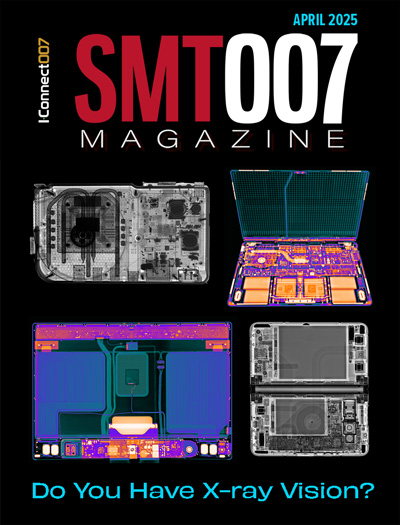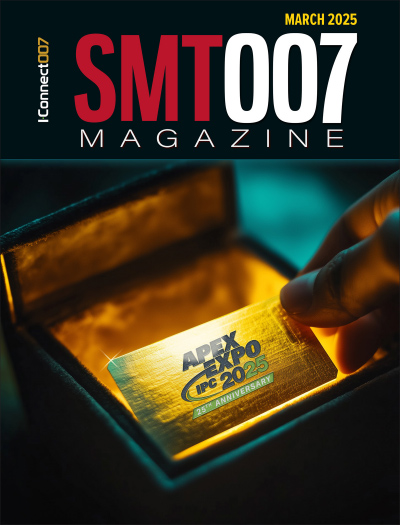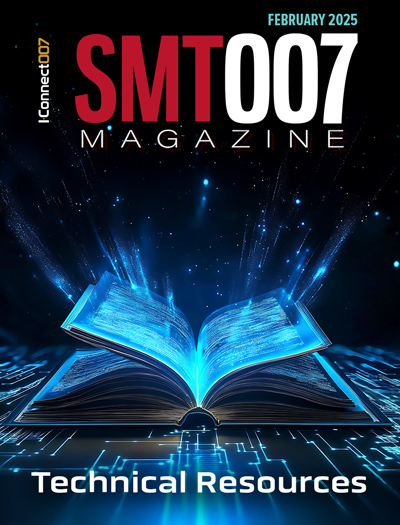-

- News
- Books
Featured Books
- smt007 Magazine
Latest Issues
Current Issue
Do You Have X-ray Vision?
Has X-ray’s time finally come in electronics manufacturing? Join us in this issue of SMT007 Magazine, where we answer this question and others to bring more efficiency to your bottom line.

IPC APEX EXPO 2025: A Preview
It’s that time again. If you’re going to Anaheim for IPC APEX EXPO 2025, we’ll see you there. In the meantime, consider this issue of SMT007 Magazine to be your golden ticket to planning the show.

Technical Resources
Key industry organizations–all with knowledge sharing as a part of their mission–share their technical repositories in this issue of SMT007 Magazine. Where can you find information critical to your work? Odds are, right here.
- Articles
- Columns
Search Console
- Links
- Media kit
||| MENU - smt007 Magazine
The Coldest Chip in the World
December 20, 2017 | University of BaselEstimated reading time: 2 minutes
Physicists at the University of Basel have succeeded in cooling a nanoelectronic chip to a temperature lower than 3 millikelvin. The scientists from the Department of Physics and the Swiss Nanoscience Institute set this record in collaboration with colleagues from Germany and Finland. They used magnetic cooling to cool the electrical connections as well as the chip itself. The results were published in the journal Applied Physics Letters ("On-and-off chip cooling of a Coulomb blockade thermometer down to 2.8 mK").
Even scientists like to compete for records, which is why numerous working groups worldwide are using high-tech refrigerators to reach temperatures as close to absolute zero as possible. Absolute zero is 0 kelvin or -273.15°C. Physicists aim to cool their equipment to as close to absolute zero as possible, because these extremely low temperatures offer the ideal conditions for quantum experiments and allow entirely new physical phenomena to be examined.
Cooling by turning off a magnetic field
The group led by Basel physicist Professor Dominik Zumbühl had previously suggested utilizing the principle of magnetic cooling in nanoelectronics in order to cool nanoelectronic devices to unprecedented temperatures close to absolute zero. Magnetic cooling is based on the fact that a system can cool down when an applied magnetic field is ramped down while any external heat flow is avoided. Before ramping down, the heat of magnetization needs to be removed with another method to obtain efficient magnetic cooling.
A successful combination
This is how Zumbühl’s team succeeded in cooling a nanoelectronic chip to a temperature below 2.8 millikelvin, thereby achieving a new low temperature record. Dr Mario Palma, lead author of the study, and his colleague Christian Scheller successfully used a combination of two cooling systems, both of which were based on magnetic cooling. They cooled all of the chip’s electrical connections to temperatures of 150 microkelvin – a temperature that is less than a thousandth of a degree away from absolute zero.
They then integrated a second cooling system directly into the chip itself, and also placed a Coulomb blockade thermometer on it. The construction and the material composition enabled them to magnetically cool this thermometer to a temperature almost as low as absolute zero as well.
“The combination of cooling systems allowed us to cool our chip down to below 3 millikelvin, and we are optimistic than we can use the same method to reach the magic 1 millikelvin limit,” says Zumbühl. It is also remarkable that the scientists are in a position to maintain these extremely low temperatures for a period of seven hours. This provides enough time to conduct various experiments that will help to understand the properties of physics close to absolute zero.
Suggested Items
NUS Physicists Discover a Copper-free High-temperature Superconducting Oxide
03/28/2025 | PRNewswireProfessor Ariando and Dr Stephen Lin Er Chow from the National University of Singapore (NUS) Department of Physics have designed and synthesised a groundbreaking new material—a copper-free superconducting oxide—capable of superconducting at approximately 40 Kelvin (K), or about minus 233 degrees Celsius (deg C), under ambient pressure.
Indium to Showcase Proven EV Products and High-Reliability Alloys at Productronica China
03/26/2025 | Indium CorporationAs a global materials supplier and trusted partner in electric vehicle (EV) and e-Mobility manufacturing, Indium Corporation® is proud to showcase its high-reliability alloys and soldering solutions at Productronica China, March 26-28, in Shanghai, China.
YINCAE: UF 158UL Redefines Underfill for Large Chips
03/12/2025 | YINCAEYINCAE, a leading innovator in advanced materials solutions, today announced the launch of its groundbreaking underfill material, UF 158UL. This cutting-edge product is designed to meet the increasing demands of large format chips, offering unparalleled performance in room temperature flow, fast cure, and high reliability.
Indium to Showcase High-Reliability Solder Technology at IPC APEX EXPO 2025
03/05/2025 | Indium CorporationIndium Corporation®, a leading materials provider for the electronics assembly market, will feature its high-reliability solder solutions at IPC APEX EXPO 2025, taking place March 18-20 in Anaheim, California.
epoxySet Launches UV-8675 – Deep Section, UV Cured Adhesive for PVC
02/19/2025 | epoxySetepoxySet introduces the UV-8675, acrylated urethane adhesive for bonding PVC, polycarbonate and most other plastics. Designed for bonding PVC tubing in medical devices, it also bonds well to glass and metals. This semirigid polymer offers high bond strength without causing stress cracks.


